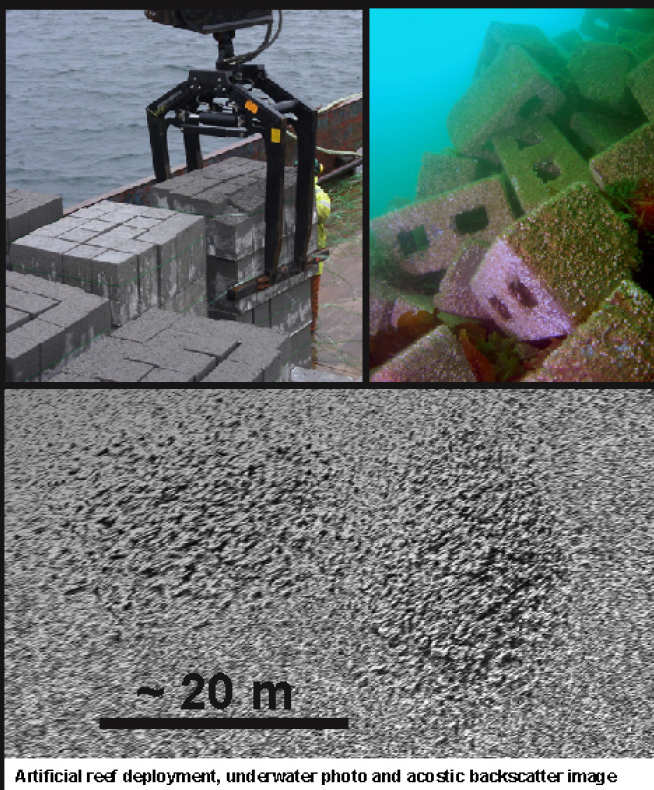Temperate habitats - Oban
Detecting environmental change during the construction of an artificial reef
This work was conducted as part of the Loch Linnhe artificial reef project

Together with Craig Brown a marine biologist, side-scan sonar was used to investigate temperate habitats on the UK continental shelf. We set out to examine the relationships between acoustic backscatter, sediment grain size distribution and benthic community using dual frequency (100 and 410 kHz) side-scan sonar and sediment grab samples from Loch Linnhe on the west coast of Scotland near Oban. The underlying aim of this work was to move beyond the traditional method for the interpretation of acoustic backscatter that relies on experienced interpretation by eye of grey-scale images. We developed a suite of in-house software to remove an empirically estimated average grazing angle dependence on backscatter. The processed data were then analysed by forming histograms of pixels extracted from a 20sq m box around each ground truth site. A good positive correlation between mean backscatter intensity and mean grain size was obtained i.e. the coarsest samples had the brightest backscatter. A good positive correlation was also found between the standard deviations of the backscatter and grain size distributions i.e. poorly sorted sediments gave the most variable backscatter. There is also a low-moderate, but significant correlation between the similarity matrices from the benthic assemblages and backscatter characteristics. The work showed that backscatter a useful proxy for the spatial delineation of benthic habitat at this site.
Publications
Brown, C. J. and J. S. Collier, 2008. Mapping benthic habitat in regions of gradational substrata: An automated approach utilising geophysical, geological, and biological relationships. Estuarine, Coastal and Shelf Science, Vol. 78, 203-214.
Collier, J.S., C.J. Brown, 2005. Correlation of sidescan backscatter with grain size distribution of surficial seabed sediments, Marine Geology, Vol. 214, 431-449.
Collaborators
Craig Brown (formerly at the Scottish Association for Marine Science)


